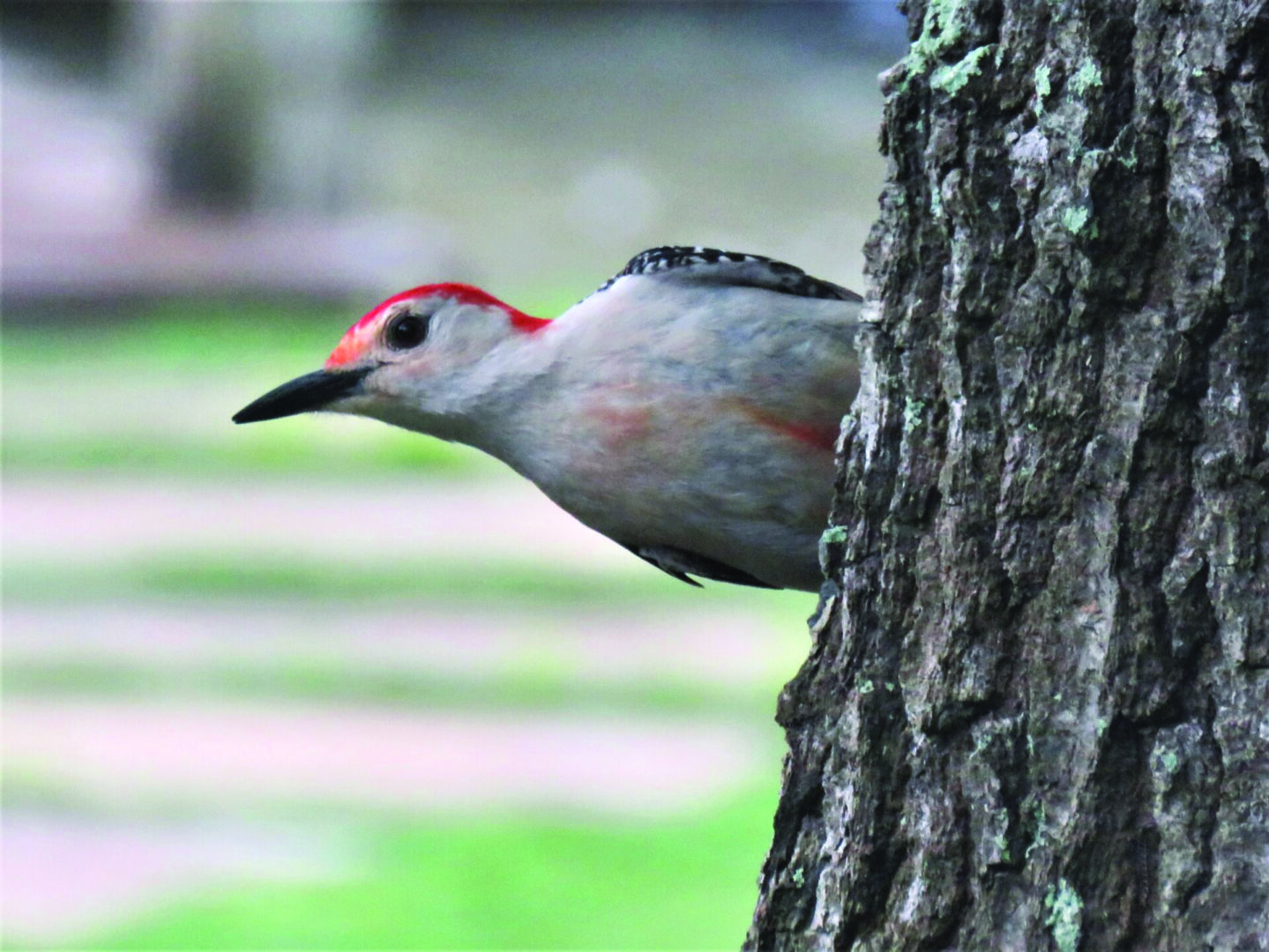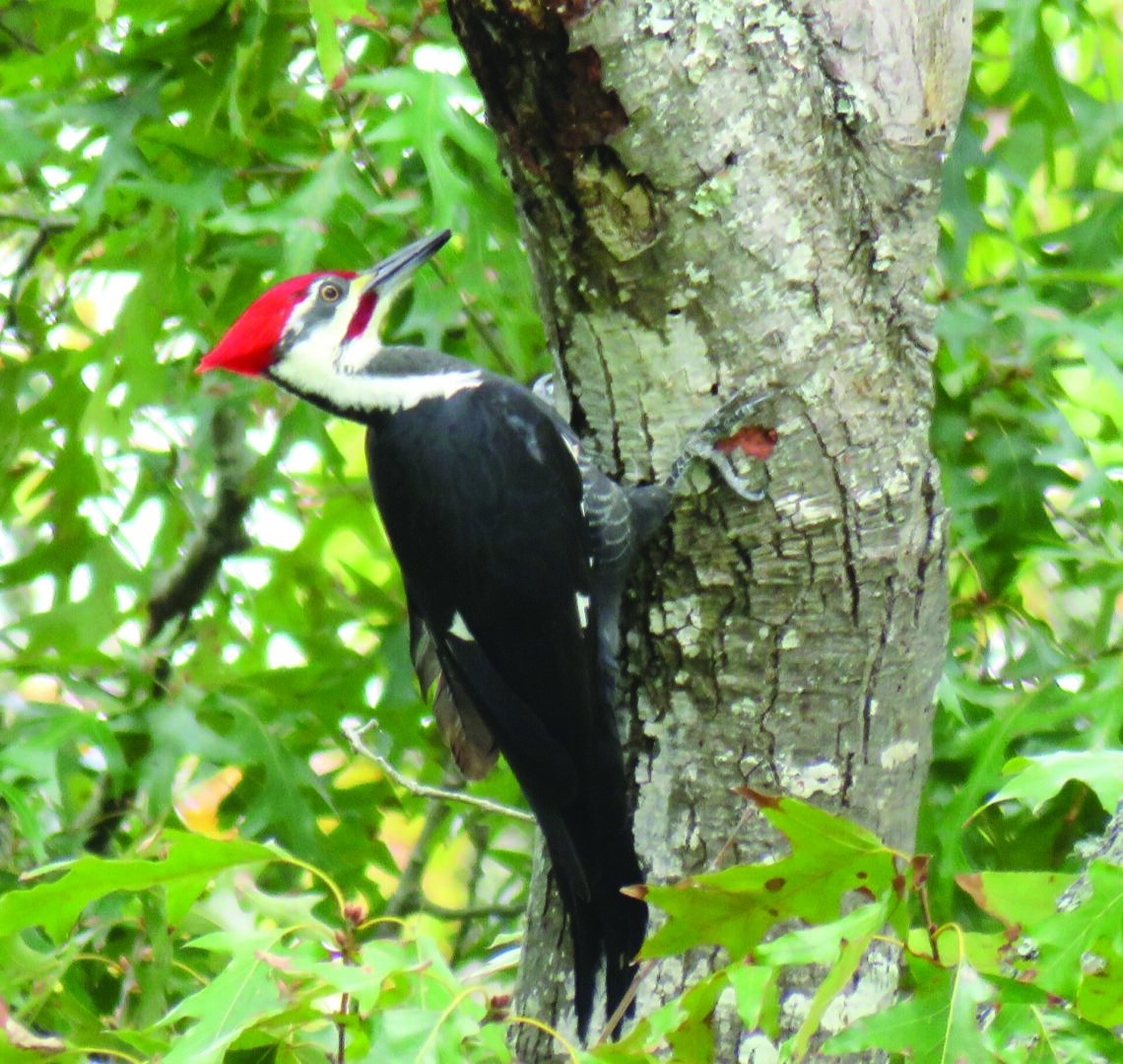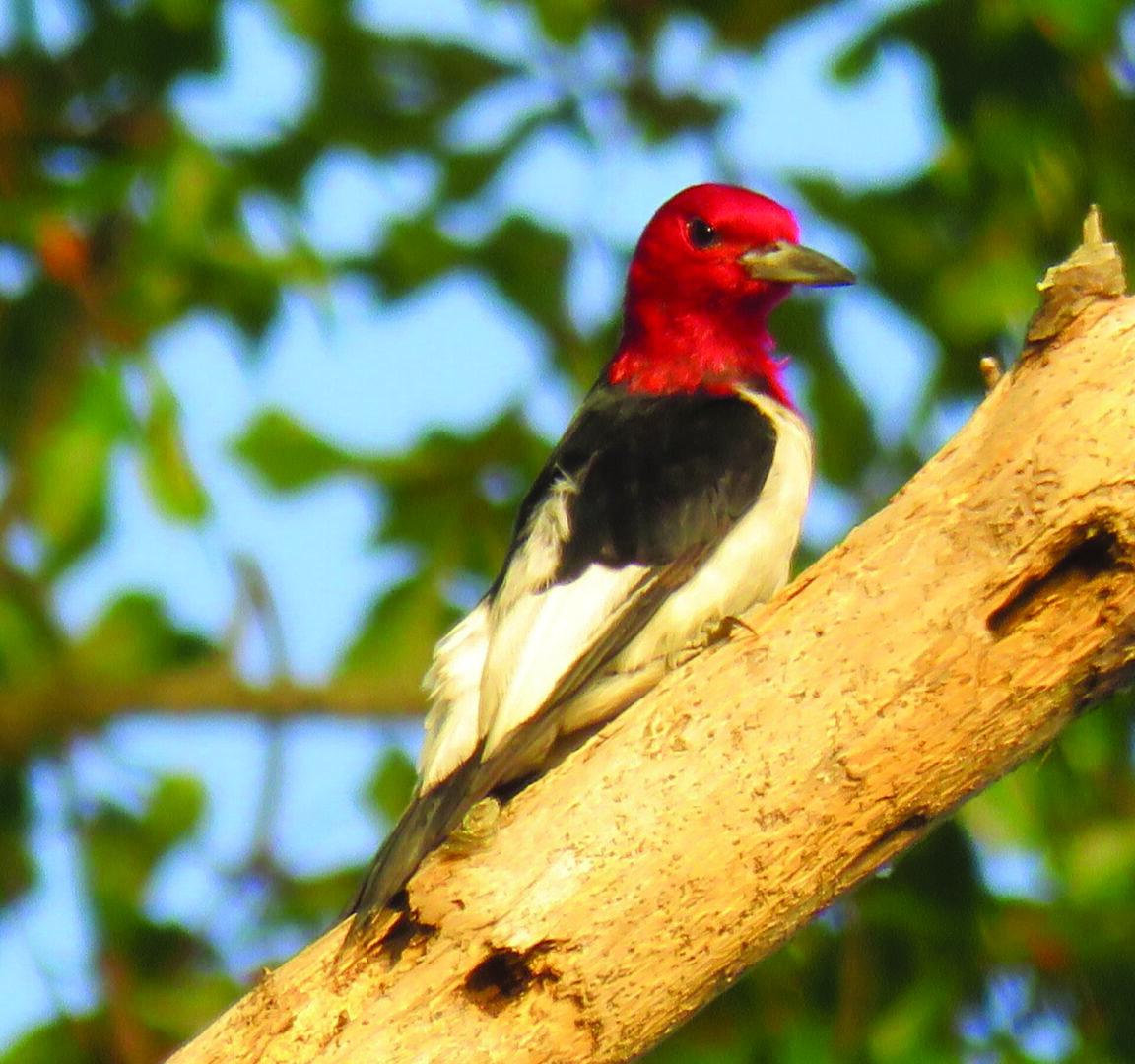Fishing Hole Nature: Our Many Different Woodpeckers

When you live in East Texas, woodpeckers are a common sight – Red-Headed, Hairy, Pileated, Yellow-Bellied Sapsucker, Red-Bellied, Northern Flicker, Downy, and even a Red-Cockaded if you are lucky!! But you might just hear them before you see them. They all tap, drum and hammer on trees to find their meals. Our many different woodpeckers drum in slightly different tempos, and each species has their particular niche. Some drum on dead trees and limbs, while others prefer drumming on living trees. Some woodpeckers drum up and down trunks, hunting for grubs, while others tap along horizontally for insect-infested sap. But just how do they know where to tap? Just by listening! A grub makes noise when chewing through wood and hollowing out cavities.

Woodpeckers listen for them to chew, and then drum to find those hollow cavities. Finally, these birds use one of their most amazing anatomical features. To hunt deep inside wood they send out their incredible tongues. Tongues can be as long as 1/3 of their body length, or up to about 4” long! Each woodpecker species has slightly different tongues for slightly different feeding niches. Some tongues are brush-like, others have barbs, and many are sticky. Whatever it takes to get a meal!

On average woodpeckers drum 10,000 times per day, and manage to survive after smacking their heads into trees over and over! The answer is that their bodies developed several complex protective structures. Their skull bones are thick and spongy, and the brain is packed in so tightly that it cannot collide with the skull. Woodpeckers also have special tough membranes that close over each eye when they hammer. This not only protects their eyes from debris, it snuggly holds their eyes in place! Even the beak is built to divert some of the shock, and they move their heads around as they drum so no one portion of their skull gets repeated jolts.

We all know about their characteristic slash of bright red head feathers because all woodpeckers have some amount of red on their heads. It is one of their endearing and flashy traits. But did you know that woodpeckers have very stiff tails to support them on tree trunks? They lean on their tails like the third leg of a stool, allowing them to be stable and nimble on vertical surfaces.
A special woodpecker lived here at one time, but unfortunately hasn’t been seen in over 50 years. The Ivory-Billed Woodpecker was a magnificent bird, and larger than our big Pileated Woodpecker. It had a flaming red crest, an ivory bill and a mostly black face. There have been unsubstantiated sightings throughout the southeastern US, but no strong proof that they still exist. In 2008 the Nature Conservancy offered a large reward to anyone who could lead scientists to a living Ivory-Billed Woodpecker in the wild. No one was able to claim this reward. Sadly, it’s most likely that these stunning birds are now extinct, but bird lovers always keep hoping and watching!

Learn more about the incredible nature in our area by joining a chapter of the Texas Master Naturalist organization. To find a chapter close to you, or to read about the state program, go online to
https://txmn.tamu.edu. Volunteer and get involved!















